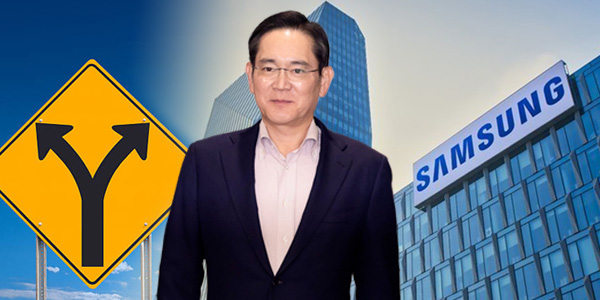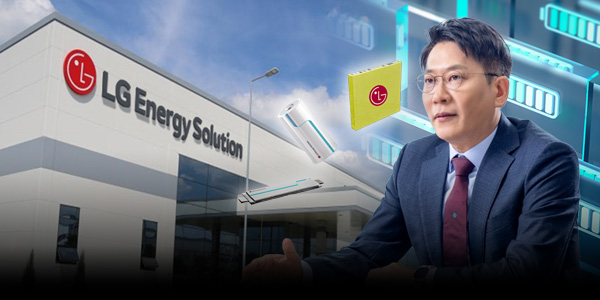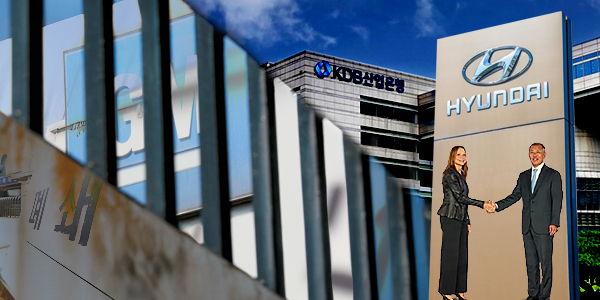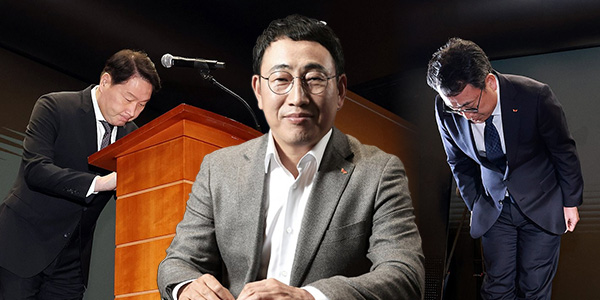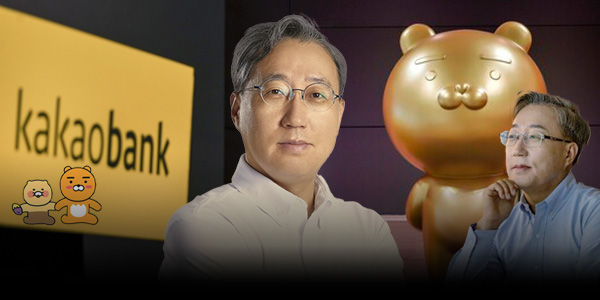-

- Lee Dong-hoon Drives SK Biopharm’s AI Platform to Dominate Epilepsy Care
- CEO Lee Dong-hoon’s “Innovative New Drugs and Digital Integration” Strategy Enters Full Execution Phase
SK Biopharm’s strategy led by CEO Lee Dong-hoon, which combines innovative new drug development with digital technology, has entered its full execution phase.
After successfully launching the epilepsy treatment cenobamate (marketed as Xcopri in the U.S.) in the global market, SK Biopharm is now accelerating its entry into the artificial intelligence (AI)-based digital healthcare sector.
The company believes its proprietary brainwave analysis technology and wearable device capabilities have reached the commercialization stage and has begun building a “personalized epilepsy ecosystem” that encompasses both treatment and management.
According to industry sources on the 26th, SK Biopharm is expanding its business collaboration with Latin American pharmaceutical company Eurofarma through the commercialization of its epilepsy management platform.
On the 21st, SK Biopharm established a joint venture called “Mentis Care” with Eurofarma to develop and commercialize an AI-based epilepsy management platform. The two companies have maintained a partnership since signing an exclusive sales agreement in 2022 for cenobamate across 17 Latin American countries.
An SK Biopharm official said, “Eurofarma has consistently shown strong interest in the AI platform, and given cost considerations, both companies decided to pursue joint development.”
The background behind SK Biopharm’s move into epilepsy management platform commercialization lies in its self-developed treatment, cenobamate.
Typically, epilepsy treatment starts with existing medications, and patients are switched to alternative therapies or new drugs if the initial treatment proves insufficient.
Cenobamate has been proven to significantly reduce seizure frequency compared to existing treatments. Having a clinically validated and effective drug made it feasible to expand into a platform business, given both market potential and medical value.
Mentis Care aims to support data-driven treatment processes and establish a personalized patient management environment. It will develop real-time seizure prediction technology, a patient-specific alert system, and a data-based clinical decision support platform.
The goal is to refine seizure detection and prediction algorithms to a level suitable for clinical trials, ensuring practical use in real-world medical settings. In this collaboration, SK Biopharm leads the “technology development,” while Eurofarma takes charge of “business strategy” and “AI training data acquisition.”
Seizure management is central to epilepsy treatment, as seizures can lead to serious risks such as falls, brain damage, or organ failure.
This platform development is not a short-term project.
Since 2018, SK Biopharm has been laying the foundation for digital healthcare through its “Zero Project,” aimed at completely eliminating seizures in epilepsy patients. The company has been developing brainwave analysis technologies and wearable devices, accumulating expertise in seizure prediction and real-time monitoring in the process.
In 2023, SK Biopharm made its debut at CES, showcasing five epilepsy detection and prediction devices: Zero Glass, Zero Wired, Zero Headband, Zero Earbud, and Zero Headset.
At that time, SK Group Chairman Chey Tae-won personally tested the glasses-type device “Zero Glass,” emphasizing the convergence of bio and digital technologies.
CEO Lee said, “The response to the epilepsy detection and prediction devices we presented at CES was overwhelming. The five wearable devices we developed mark the beginning of SK Biopharm’s digital healthcare journey and will serve as a starting point for becoming a game changer in the epilepsy field by creating synergy with our innovative drug cenobamate.”
At the “SK AI Summit” held in November 2024, the epilepsy management AI platform “Zero” and the wearable device “Zero Glass” were also featured.
The “Zero” platform consists of a mobile app, a smartwatch, and a web service for medical professionals, offering real-time seizure prediction and alerts, as well as medication management functions. The mobile app for patients and caregivers provides seizure history, statistics, trigger tracking, and medication records, along with real-time notifications and predictive alerts.
If the platform can improve treatment adherence, it could also have a positive impact on expanding prescriptions for cenobamate.
In particular, absence seizures often go unnoticed by patients themselves. These episodes typically involve a sudden pause in activity, a blank stare, or a brief downward nod lasting only a few seconds.
An SK Biopharm representative explained, “If absence seizures can be detected, it will allow for more accurate monitoring of seizure cycles, which can provide meaningful help to physicians in adjusting medication dosages.”
#SKBiopharm #LeeDonghoon #AI #digitalhealthcare #epilepsy #cenobamate #Xcopri #Eurofarma #wearabletech #ZeroProject
-
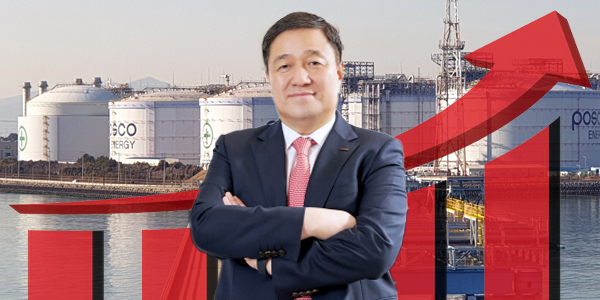
- Lee Kye-in Drives POSCO International’s LNG Powerhouse to Record Profits
- POSCO International’s long-term investment aimed at expanding its liquefied natural gas (LNG) value chain—from resource production to power generation—is beginning to deliver tangible results.
CEO Lee Kye-in of POSCO International is expected to solidify a structure capable of generating operating profit in the KRW 1 trillion range (US$ 695.4 million), based on gas field development and LNG terminal construction.
According to securities industry sources on October 12, POSCO International is projected to maintain a strong performance this year, led by its core LNG business.
Choi Yong-hyun, a researcher at KB Securities, forecast that POSCO International will post KRW 1.1318 trillion (US$ 787.3 million) in operating profit this year. This would mark the company’s third consecutive year surpassing the KRW 1 trillion (US$ 695.4 million) threshold since first joining the “KRW 1 trillion club” in 2023.
The company is expected to further stabilize its profit structure by minimizing the risk from LNG price fluctuations through an integrated LNG value chain.
Choi explained, “When LNG prices are high, POSCO International can increase sales prices at the development (upstream) stage, and when prices are low, it can reduce raw material costs at the consumption (downstream) stage, such as in LNG power generation, thereby maintaining stable profitability.”
After designating LNG as a core growth business in 2022, POSCO International has been executing an investment plan worth KRW 1.45 trillion (US$ 1.0 billion). The company is expanding its value chain across gas fields, LNG terminals, bunkering, and power plants.
In the exploration and production (E&P) sector, the company is completing an expansion investment to triple its Australian onshore natural gas production through its subsidiary, Senex Energy, by the end of this year.
Once completed, Senex Energy’s gas field production capacity will increase from 20 PJ (petajoules) to 60 PJ, equivalent to approximately 1.2 million tons of LNG.
A POSCO International official stated, “The first gas processing facility in the Australian gas field has been completed, and the installation of the second and third units will be finished by the end of this year. Profitability is expected to become visible from 2026.”
In the midstream phase of its LNG business, the company is seeking opportunities to enter the trading market through the Gwangyang LNG terminal.
Although most of POSCO International’s LNG imports are currently tied to long-term contracts, which could limit short-term growth, increased import volumes are expected to create more trading opportunities in the mid to long term.
The ongoing expansion of the Gwangyang LNG terminal is seen as a positive factor for its trading business.
The Gwangyang terminal currently operates with a capacity of 930,000 kiloliters, including a sixth tank of 200,000 kiloliters completed in June 2023, in addition to the existing 730,000 kiloliters.
POSCO International plans to expand this capacity to 1.33 million kiloliters with the seventh and eighth tanks at the Gwangyang 2 terminal by 2026, and further to 2.27 million kiloliters by 2030 with additional terminals in adjacent areas.
The company is also actively advancing into downstream businesses, including LNG power generation and bunkering.
In September, POSCO International announced plans to invest KRW 1.6351 trillion (US$ 1.1 billion) in the Incheon LNG Power Plant Units 3 and 4.
The investment will be used to replace the aging facilities with new LNG power plants capable of hydrogen co-firing, including two gas turbines and one steam turbine.
For its LNG bunkering business, which supplies LNG fuel to ships, POSCO International recently signed business agreements with Korea Southern Power and the Yeosu Gwangyang Port Authority to expand infrastructure and commercial operations.
For CEO Lee Kye-in, the strengthening of profitability based on the LNG value chain is a promising sign.
In an interview with reporters in October 2023, Lee stated, “We will foster the energy sector as the group’s third growth engine after steel and secondary battery materials and generate synergy through a complete LNG value chain.”
Before becoming CEO, Lee held key positions including Head of the Bangkok and Istanbul branches, Head of HR Support, Head of the Parts and Materials Division, Head of the Steel Division, and Head of the Trade Division. With his diverse background in steel trading, materials, and food businesses, he has been expected to lead the company stably and drive performance in key sectors such as energy.
Based on his achievements in the energy sector, Lee became the only executive among the presidents appointed under POSCO Group Chairman Chang In-hwa to be reappointed this year.
#POSCOInternational #LNG #Energy #LeeKyein #NaturalGas #Investment #KBSecurities #GwangyangTerminal #PowerGeneration #Bunkering
-
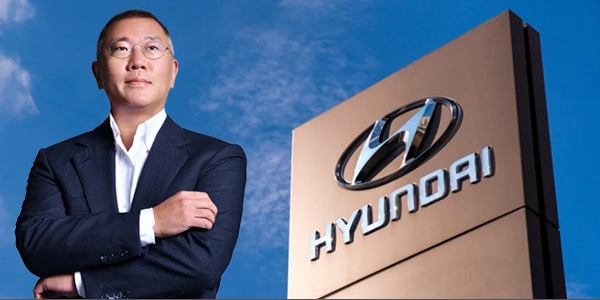
- Chung Eui-sun’s Robotics and Autonomous Driving Ambitions Hit Union Roadblock
- If the Yellow Envelope Act goes into effect in March next year, Hyundai Motor Group Chairman Chung Eui-sun is expected to face significant pressure in pushing forward overseas investments and new businesses.
During this year’s wage and collective bargaining negotiations, Hyundai Motor’s union demanded prior notification on plans related to new businesses such as robotics, autonomous driving, and advanced air mobility (AAM). Kia’s union went further, insisting that new business plants be built domestically first.
Since next year’s negotiations will take place after the law takes effect, industry observers predict stronger resistance from the unions against Hyundai Motor Group’s overseas expansion plans.
According to industry sources on September 17, Hyundai Motor Group is increasing investment and production in the U.S., including plans to build a robotics plant there. However, the enforcement of the Yellow Envelope Act is expected to make labor disputes unavoidable.
The law expands the scope of legitimate union disputes from “working condition decisions” to “business management decisions that affect working conditions.” This raises the likelihood that Hyundai and Kia unions will use legal strikes to demand that new businesses be launched domestically first.
Signs of conflict from the Yellow Envelope Act have already surfaced during this year’s wage talks.
On September 16, Hyundai Motor’s labor and management reached an agreement on the 2024 negotiations with 52.9 percent of union members voting in favor. However, the two sides agreed to continue discussions on new business initiatives.
In this year’s negotiations, Hyundai Motor’s union demanded prior notification from management before pushing ahead with new businesses. Labor and management also agreed to lay the groundwork for attracting new projects that could position the company at the forefront of the future mobility industry.
Although labor and management managed to avoid a breakdown this year, the lower approval rate among union members suggests sharper conflict may lie ahead.
Union approval rates for tentative wage agreements were 61.9 percent in 2022, 58.8 percent in 2023, and 58.9 percent in 2024, but this year support barely surpassed a majority.
Some analysts say that since this year’s deal left the door open for new business attraction, once the law goes into effect next March, the unions will gain more leverage to resist overseas projects, potentially escalating labor-management conflict.
Kia’s union has taken an even tougher stance, making domestic construction of new business facilities a formal agenda item in this year’s bargaining.
They are demanding clauses in the labor contract that require new plants for hydrogen cars, robotics, AAM, and core parts of eco-friendly vehicles such as electric vehicles and extended-range EVs (EREVs) to be established domestically.
Kia’s union declared breakdown of talks after five rounds of negotiations on September 16 and is now preparing for a strike. It filed for dispute mediation with the National Labor Relations Commission on September 12 and will hold a strike vote among all members on September 19.
For Chairman Chung, deciding to launch new businesses domestically is not an easy choice.
Hyundai Motor Group is considered a step behind rivals in future mobility fields such as robotics and autonomous vehicles.
In autonomous driving, domestic laws remain underdeveloped, creating difficulties even in collecting data. If Hyundai builds new production plants domestically, projects could be delayed for years.
To keep pace with competitors, the group needs to accelerate investment in new businesses, but union opposition is expected to be the biggest obstacle.
An industry insider said, “If the Yellow Envelope Act is not amended before it takes effect next year, Hyundai and Kia unions will likely intervene in new business initiatives. With autonomous driving and robotics technologies advancing by the day, it would be a heavy burden for Chairman Chung to shift projects back to Korea and lose valuable time.”
#Hyundai #Kia #ChungEuisun #YellowEnvelopeAct #laborunion #autonomousdriving #robotics #AAM #investment #mobility
-
- JB Financial’s Longest-Serving CEO Thrives on Earnings, But Lacks Diversification
- Generally, in financial groups with an owner, it is common for the owner to directly serve as group chairman. Meritz Financial Group, Korea Investment Financial Group, and Mirae Asset Financial Group are prime examples.
It is rare for a professional manager to hold the chairman position in a financial holding company with an owner. JB Financial Group stands as a notable exception.
Despite being an owner-led financial group under Samyang Group, JB Financial Group has been managed by Kim Ki-hong, chairman of JB Financial Holdings, since 2019.
Chairman Kim was first appointed in 2019 and has recently secured his third consecutive term. His tenure runs until March 2028. If completed, he will have led JB Financial Group for a total of nine years.
◆ From financial regulator to KB Financial chairman candidate, Kim becomes captain of JB Financial Group
Chairman Kim is known as a “versatile financier,” having built his career across academia, the Financial Supervisory Service, and private financial companies.
He previously worked as a professor at Chungbuk National University and served as deputy governor of the Financial Supervisory Service, as well as head of the planning team for the establishment of KB Financial Holdings. When KB Financial Holdings was officially launched in September 2008, he left the group. In 2014, he became CEO of JB Asset Management and in 2019 was appointed chairman and CEO of JB Financial Holdings.
Former chairman Kim Han, a member of the owning family, said of appointing Kim Ki-hong, “He has a deep understanding of banking and holding companies, making him the right person to lead JB Financial into its next era.” Kim was also once considered a candidate for both KB Financial chairman and the head of the Financial Supervisory Service.
Yet what has truly allowed him to remain as chairman of a financial holding company with an owner for nine years are two critical numbers: earnings and stock price.
◆ The first number proving his long-term leadership, seven years of earnings growth
JB Financial Holdings’ net profit attributable to controlling interests, which stood at KRW 321 billion (US$ 223 million) in 2018 before his appointment, has continued to grow under his leadership.
It rose to KRW 362.1 billion (US$ 252 million) in 2019, KRW 390.8 billion (US$ 272 million) in 2020, KRW 552.4 billion (US$ 384 million) in 2021, KRW 618.3 billion (US$ 430 billion) in 2022, and KRW 603.9 billion (US$ 420 million) in 2023, with only 2023 showing a slight dip from the prior year.
In 2024, net profit reached KRW 693 billion (US$ 482 million), more than doubling compared to 2018 before his appointment.
Kim not only grew net profit but also strengthened the group’s profit structure itself, as both interest and non-interest income improved.
Net interest income increased from KRW 1.25 trillion (US$ 870 million) in 2018 to KRW 1.98 trillion (US$ 1.37 billion) in 2024, while net fee and commission income expanded more than 7.5 times from KRW 10.5 billion (US$ 7.3 million) to KRW 79.5 billion (US$ 55.3 million).
In 2024, the net interest margins (NIM) of Jeonbuk Bank and Kwangju Bank were 2.67% and 2.69% respectively, well above the regional bank average of 2.18%. Among six regional banks, only JB Financial’s two banks and Jeju Bank (2.06%) recorded NIMs above 2%.
◆ A rare upward-trending stock in a stagnant market, driven by results and shareholder returns
JB Financial Holdings’ stock price has also risen in line with its earnings.
What stands out is its steady upward trajectory over about five years. At the end of 2020, Kim’s second year as chairman, the stock closed at KRW 5,640 (US$ 3.9). It surpassed KRW 8,000 (US$ 5.6) in mid-2021, KRW 10,000 (US$ 6.9) in early 2023, KRW 15,000 (US$ 10.4) in mid-2024, and KRW 20,000 (US$ 13.9) in February 2025. The growth was gradual but steady.
There were ups and downs along the way, but compared to most domestic stocks stuck in the stagnant “Boxpi” market after COVID-19, JB Financial’s stock has shown a rare upward trend.
Key indicators used in stock analysis also show strong performance. According to financial data provider FnGuide, JB Financial Holdings’ 2024 return on equity (ROE) was 12.8%, far above the average for listed financial firms (7.82%) and all listed companies on KOSPI (7.48%).
Its price-to-earnings ratio (PER) stood at 4.69 times based on 2024 earnings, lower than the averages of financial companies (6.84) and all KOSPI companies (11.29), suggesting more upside potential.
The stock’s rise has also been driven by Kim’s proactive shareholder-friendly policies.
JB Financial has set long-term goals of 15% ROE and a 50% shareholder return rate, with specific steps to maintain ROE above 13% annually and achieve a 45% shareholder return rate by 2026.
The group has also pledged to buy back and cancel shares for any shareholder returns exceeding a 28% payout ratio.
Kim Eun-gap, analyst at Kiwoom Securities, predicted, “With its high ROE, JB Financial can differentiate itself from other banking stocks through shareholder-friendly policies and growth strategies.”
◆ Rising delinquency rates, remaining tasks are risk management and business diversification
Kim’s current term runs until March 2028. Born in January 1957, he will be over 70 years old by then, closing out nearly a decade of leadership.
His remaining priorities include risk management and business diversification.
JB Financial’s delinquency rate has been climbing rapidly since 2023. After rising modestly from 0.48% in 2021 to 0.58% in 2022, it jumped to 1.09% in 2023 and 1.58% in the first half of 2025.
For comparison, as of the first half of 2025, delinquency rates were 0.93% at iM Financial Holdings and 1.02% at BNK Financial Holdings. JB Financial’s rate is nearly 1.5 times higher.
Still, its asset soundness has not reached alarming levels.
While provisions for credit losses have risen sharply and coverage ratios have declined, they remain at stable levels.
Provisions for credit losses, which had been stable in the KRW 100 billion (US$ 69.5 million) range until 2021, jumped to KRW 256.5 billion (US$ 178 million) in 2022, KRW 442.5 billion (US$ 308 million) in 2023, and KRW 478.6 billion (US$ 333 million) in 2024.
The coverage ratio also fell from 168% in 2022 to 143.4% in 2023 and 139.7% in 2024. Still, this remained higher than the 111.9% average of the three major regional financial holding companies (iM, BNK, JB) in 2024.
The coverage ratio measures the level of provisions set aside against non-performing loans. A high ratio means the financial institution has solid risk absorption capacity.
Kim Kyung-geun, researcher at Korea Investors Service, explained, “Since 2022, asset soundness indicators have deteriorated due to increased real estate financing risk, prolonged high interest rates, and repayment resumption by borrowers after deferral programs ended in September 2023. However, the likelihood of a rapid decline in financial stability from rising bad debts appears low.”
Industry experts also point out that JB Financial lags its competitors in business diversification.
Currently, JB Financial is focused on banking and capital (installment finance and leasing). This contrasts with competitors such as BNK Financial, which also operates securities and savings banks, and iM Financial, which has added securities and life insurance to its portfolio.
Korea Investors Service assessed, “Compared to competitors, JB Financial’s subsidiaries lack diversification across financial sectors, leaving its overall business portfolio relatively underdeveloped.”
#JBFinancial #KimKihong #financialgroup #earningsgrowth #stockprice #ROE #PER #shareholderreturns #delinquency #businessdiversification
-
- Hanwha Aerospace Hires Pentagon Veterans, Speeds U.S. Entry With Wheeled K9
- Hanwha Aerospace’s U.S. subsidiary has drawn attention after recruiting several former U.S. Department of Defense officials.
The new executives bring notable experience in artillery and munitions, a move seen as part of Hanwha’s strategy to strengthen sales of its K9 howitzer in the U.S. Army’s Self-Propelled Howitzer Modernization (SPH-M) program.
The key question is whether Hanwha can adapt its tracked K9 howitzer to a wheeled version that meets U.S. requirements. All eyes are on whether Son Jae-il, CEO of Hanwha Aerospace, can complete development of a wheeled K9 before the Army begins its pilot program next year.
If the company successfully provides a wheeled K9 capable of long-range mobility and firing for the pilot program, and later wins a large-scale contract, it would mark Hanwha’s first-ever entry into the U.S. defense market.
On September 14, Hanwha Defense USA announced that Todd Muller, Senior Vice President for Firepower Programs, and Jessica Bannaman, Director of Logistics Business Development, had started their roles. Muller previously oversaw the Army’s extended-range artillery program, while Bannaman served as Deputy Chief of Staff for the Department of Defense’s logistics and munitions joint program.
Shortly after his appointment, Muller wrote on his personal social media account that he was joining a team “uniquely positioned to meet the Army’s artillery modernization requirements through solutions ranging from wheeled howitzers to tracked howitzers to a complete suite of munitions.”
Industry sources also revealed that Hanwha is preparing to hire Alexander Nelson Wong, a former White House Deputy National Security Advisor under President Donald Trump, who was regarded as one of Trump’s key strategists.
Analysts see these moves as part of Hanwha’s aggressive push to prepare for the SPH-M pilot project, which the U.S. Army will launch soon.
The Army plans to select companies for Phase 1 of the pilot project in September. Based on the results of the 2026 trial, it will narrow down candidates for Phase 2 in 2027, and later award final delivery contracts.
The evaluation will be based on criteria such as range, precision, scale, mobility, and sustainability. Five models, including Hanwha’s K9, are expected to compete in Phase 1. Notably, all of the other contenders are wheeled self-propelled howitzers.
Wheeled howitzers have the advantage of fast road mobility and long-distance deployment, while tracked models like Hanwha’s K9 perform better in rough terrain. However, wheeled versions are generally seen as more cost-effective to maintain.
Before the SPH-M program, the Army had already decided to introduce wheeled self-propelled howitzers through the Extended Range Cannon Artillery (ERCA) program. This decision is believed to have spurred Hanwha to accelerate its own wheeled K9 development.
At the CANSEC 2025 defense exhibition in Canada this past May, Hanwha showcased a wheeled model with a 700-kilometer range and a top speed of 100 km/h. The company has set a goal of completing its wheeled K9 development in time for next year’s SPH-M pilot.
Hanwha had previously demonstrated the K9’s firing and mobility in September 2022 and April 2024 at the U.S. Army’s Yuma Proving Ground, with reports suggesting the Army’s response was favorable.
According to its capital increase plan in July, Hanwha also intends to invest KRW 1 trillion (US$ 695.2 million) in the U.S. by 2027 to build a smart factory that will produce propellant and explosives for the 155mm shells used in the K9 howitzer.
#HanwhaAerospace #K9 #SPHM #USArmy #defenseindustry #wheeledhowitzer #SonJaeil #USmarket #artillerymodernization #militarycontracts
-
- SK Chemicals Taps Subsidiary Stake to Fund Green Transition
- SK Chemicals is securing investment funds based on its holdings of SK Bioscience shares.
CEO Ahn Jae-hyun of SK Chemicals is expected to accelerate the company’s transition toward an eco-friendly business portfolio by directing the secured funds into building facilities for plastic recycling and research and development in bio-based materials.
According to SK Chemicals on September 14, the company is reviewing various measures to secure investment funds for new businesses. In particular, it is considering issuing exchangeable bonds worth between KRW 220 billion and KRW 240 billion (US$ 152.9 million–US$ 166.9 million) backed by its holdings in SK Bioscience.
An SK Chemicals official said, “With the overall petrochemical industry in a slump, we face the challenge of securing investment funds,” adding, “One of the concrete options under review is issuing exchangeable bonds.”
SK Bioscience was spun off from SK Chemicals in 2018 to strengthen its expertise and efficiency as a specialized vaccine company and secure global competitiveness.
As of June 30, 2025, SK Chemicals holds 52,059,724 shares, or 66.43 percent, of SK Bioscience. The company is reportedly planning to use about 7 percent of its SK Bioscience stake to raise investment capital.
Exchangeable bonds are characterized by the fact that investors hold the right to exchange them for shares, allowing them to be issued at lower interest rates than ordinary corporate bonds.
The exchangeable bonds to be issued by SK Chemicals will mature in five years, with the coupon rate, yield to maturity (YTM), and yield to put (YTP) all set at 0 percent. Instead, investors can exchange the bonds for shares if the stock price rises and capture the gains, with the exchange price set at a 15 percent premium to the current market price.
SK Chemicals’ current financial conditions are a factor driving the need to secure investment resources through exchangeable bonds.
The company posted a record-high separate operating profit of KRW 111.1 billion (US$ 77.2 million) last year. However, as its subsidiary SK Bioscience recorded an operating loss, the risk of worsening cash flow grew, prompting the need for separate fundraising measures.
On a consolidated basis, SK Chemicals recorded an operating loss of KRW 44.8 billion (US$ 31.2 million) last year, falling into the red. Operating losses at subsidiaries could lead to requests for financial support from the parent company, further straining cash flow.
SK Bioscience’s deficit widened from KRW 12 billion (US$ 8.3 million) in 2023 to KRW 138.4 billion (US$ 96.3 million) in 2024, raising further concerns.
Despite turning to operating losses, CEO Ahn Jae-hyun has remained committed to pushing ahead with the company’s portfolio transition strategy centered on eco-friendly materials.
In February, SK Chemicals built a pilot depolymerization facility on the site of its Ulsan plant to chemically break down waste plastics and produce recycled raw materials. The company plans to link this facility with its existing commercial production facility for high-value-added eco-friendly copolyester materials to establish what it calls the “Recycle Innovation Center (RIC).”
Depolymerization technology enables waste plastics to be broken down at the molecular level, producing recycled materials that can match the physical properties and quality of petroleum-based materials.
For SK Chemicals, this technology is particularly significant because it can establish a complete circular system by reusing plastics from discarded electronics back into new appliances.
In addition, CEO Ahn has steadily increased investment in what the company defines as the “eco-transition sector,” represented by recycling and bio-based materials.
The share of eco-transition projects in SK Chemicals’ chemical R&D investment surged from 11 percent in 2020 to 29 percent in 2021, 42 percent in 2022, and reached 54 percent in 2024.
According to the SK Chemicals 2024 Sustainability Management Report, the company plans to maintain more than 50 percent of its R&D investment in eco-transition projects over the next five years.
Regarding this, CEO Ahn said at the European Coatings Show 2025 in March, “Beyond copolyesters and circular recycled plastics, we will use our technological capabilities to develop sustainable solutions applicable across diverse fields and actively promote them.”
#SKChemicals #SKBioscience #exchangeablebonds #investmentstrategy #plasticrecycling #biomaterials #sustainability #depolymerization #ecoTransition #AhnJaehyun
-
- L&F’s Expanding Investments Deepen Heo Jae-hong’s Control Dilemma
- The management burden on Saeronix, the controlling shareholder of battery material company L&F, and on Heo Jae-hong, chairman of L&F’s board and Saeronix’s largest shareholder, is expected to grow heavier.
L&F requires massive funding for its growth, but as limitations in the financial capacity of Saeronix, its parent company, have come to light, its controlling power is weakening.
L&F’s rising investment scale
L&F continues to experience significant cash outflow from investment activities.
From 2022 to 2024, cumulative cash flow from investing activities reached negative KRW 883.2 billion (US$ 614 million). In the first half of this year alone, it was negative KRW 34.1 billion (US$ 24 million), mainly due to ongoing investment in expanding cathode production capacity.
L&F has also entered the lithium iron phosphate (LFP) cathode business in earnest, requiring additional capital.
This move is part of efforts to respond to recent signs that LFP cathode materials are becoming dominant in the global market.
In August this year, L&F established a wholly owned subsidiary, L&F Plus, investing KRW 201.1 billion (US$ 140 million) to lead the LFP business.
According to disclosures filed with the Financial Supervisory Service, this investment amounts to about 27.8% of L&F’s equity, equivalent to 7.14% of its total assets of KRW 2.8 trillion (US$ 1.9 billion) as of the end of 2024.
Although L&F initially planned to invest KRW 200 billion (US$ 139 million), it decided to contribute an additional KRW 1.1 billion (US$ 760,000) to meet customer demands. The final investment will be made in stages until the end of 2026.
Chairman Heo Jae-hong has taken the role of the first CEO of L&F Plus, while appointing L&F CFO Ryu Seung-heon as an internal director to ensure the smooth establishment of the new subsidiary.
Continuous dilution of Saeronix’s stake in L&F
Saeronix’s stake in L&F has been steadily diluted.
Because the cathode industry requires heavy facility investment, L&F has carried out multiple paid-in capital increases, which Saeronix has struggled to keep up with.
L&F raised KRW 20 billion (US$ 13.9 million) in 2016, KRW 82.6 billion (US$ 57.4 million) in 2020, and KRW 496.6 billion (US$ 345.2 million) in July 2021 through paid-in capital increases.
However, Saeronix, whose main business is electronics including LCD, generated only about KRW 62.5 billion (US$ 43.4 million) in standalone sales, revealing limited financial capacity. In the July 2021 capital increase, it participated only with a small amount and sold the rest of its subscription rights.
As a result, the stake of Saeronix and its related parties in L&F fell from 28.35% to 24.71%. By the end of 2022 it further dropped to 23.87%, 23.74% by the end of 2023, and 23.72% by the end of 2024.
Saeronix’s standalone sales were KRW 62.5 billion (US$ 43.4 million) in 2021, KRW 73.2 billion (US$ 50.9 million) in 2022, KRW 63.1 billion (US$ 43.9 million) in 2023, and KRW 55.5 billion (US$ 38.6 million) in 2024, showing no external expansion.
In terms of profitability, it also faces difficulties supporting L&F. Saeronix posted standalone operating losses of KRW 2.8 billion (US$ 1.9 million) in 2021, KRW 1 billion (US$ 700,000) in 2022, and KRW 2.5 billion (US$ 1.7 million) in 2023, before turning to an operating profit of KRW 1.1 billion (US$ 760,000) in 2024.
Although Chairman Heo Jae-hong has been personally purchasing additional L&F shares and buying back company stock, evaluations suggest these efforts are insufficient.
Thus, as L&F enters a growth phase, Saeronix faces a dilemma of weakening control.
L&F’s shareholding structure consists of Saeronix with 14.29%, Kwangsung Electronics with 3.34%, Chairman Heo Jae-hong with 2.02%, Kwangsung Jeonja with 1.61%, Heo’s younger brother Heo Jae-hyun, L&F vice president, with 1.57%, Heo’s sister Heo Loren Ja-yoon with 0.57%, and Heo’s son Heo Sung-taek with 0.05%.
If L&F fails to achieve results from its investments, the financial strain could worsen, further weakening the control of Saeronix and its related parties.
Kim Eung-kwan, senior researcher at Korea Ratings, commented, “Currently, most LFP cathodes are produced by Chinese companies, which gives L&F some advantage due to the U.S.-China trade conflict,” but added, “It will not be easy to secure price competitiveness compared with Chinese firms that have extensive production experience and capabilities, so uncertainty remains regarding investment results.”
#LNF #Saeronix #HeoJaehong #battery #LFP #cathodematerial #investment #SouthKorea #shareholding #China
-
- Hyundai’s First Supercar N74 Set to Debut Next Year
- Chung Eui-sun, Chairman of Hyundai Motor Group, is stepping up efforts to target the luxury car market next year with Hyundai’s first supercar, the N74.
The design of the N74 inherits the legacy of the Pony Coupe, a concept car Hyundai unveiled at the Turin Motor Show in Italy in 1974 but abandoned plans for mass production. This makes the model significant in terms of Hyundai Motor Group’s heritage.
As the world’s first hydrogen-electric supercar, the N74 is also expected to showcase Hyundai’s hydrogen technology, which the group has positioned as a core task in the future mobility industry.
According to industry sources on August 31, Hyundai could begin mass production of the N74 as early as next year.
The N74 has attracted strong consumer interest as Hyundai’s first supercar. Its exterior design is not expected to differ much from the N Vision 74 concept car unveiled on May 18, 2023, which was itself inspired by the Pony Coupe. The N Vision 74 went on to win awards at all four of the world’s top design competitions (iF, IDEA, Red Dot, and Good Design).
The Pony was Hyundai’s first independently developed model and the first domestically produced car in Korea’s automotive history. Before the Pony, Hyundai’s cars were all licensed productions of Ford models.
If the Pony embodies Hyundai’s heritage, the Pony Coupe is remembered as a missed opportunity. Hyundai revealed the concept at the Turin Motor Show in 1974 and even prepared production facilities, but canceled its production plans in 1981.
At the unveiling of the N Vision 74 in 2023, Chairman Chung said, “There are many things to consider for mass production, but if consumers like it, there is no reason we cannot mass-produce it.”
The N74 is an important model for Chung as he continues to push into the high-performance luxury car market. Not only does it embody Hyundai’s heritage, but it is also being developed as the world’s first hydrogen-electric supercar.
If Hyundai successfully launches the N74 while positioning hydrogen ecosystem expansion as a key future mobility strategy, it could serve as a global showcase of the group’s hydrogen technology.
Some analysts predict that despite being a hydrogen-electric vehicle, the N74 will deliver a maximum output of around 770 horsepower, surpassing the performance of existing supercars.
A Hyundai spokesperson told Business Post, “We cannot confirm anything regarding mass production,” declining further comment.
However, during its 2024 CEO Investor Day, Hyundai featured the N Vision 74 in its presentation of electrified models planned through 2030. Industry insiders believe that Hyundai already built a performance verification prototype of the N74 in August last year and is now conducting real-road testing.
The launch of the N74 could come as early as the first half of next year. Hyundai is building a dedicated electric vehicle plant in Ulsan, scheduled to begin operations in the first half of next year. Once completed, the factory is expected to begin mass production of the N74.
Production will reportedly be limited to around 200 units, allocated by country. Price forecasts vary, ranging from KRW 200 million (US$ 139,100) to around KRW 500 million (US$ 347,700), considering its status as a hydrogen-electric supercar.
Hyundai already registered the N74 trademark in Korea and Europe in 2023. Interestingly, the company has decided that even overseas, the number 74 should be pronounced “Chil-sa” rather than “Seventy-four.” Since 2023, Hyundai has also been filing patents with the U.S. Patent Office for N74 development.
An industry official said, “I hear Chairman Chung is strongly committed to mass production of the N74. Hyundai still carries a strong mass-market brand image, but with plans to compete in the 24 Hours of Le Mans with its own racing car from next year, the group is working to establish itself as a luxury brand. If it goes on to mass-produce the world’s first hydrogen-electric supercar, it could raise Hyundai’s brand image in the global market to the next level.”
#Hyundai #N74 #supercar #hydrogen #electricvehicle #luxurycar #PonyCoupe #ChungEuisun #futuremobility #LeMans
-
- HD Hyundai Bets Big with Unified Shipbuilding Push Against China
- HD Hyundai launches ‘Integrated HD Hyundai Heavy Industries’ to target global naval defense market
Chung Ki-sun, CEO of HD Hyundai and CEO of HD Korea Shipbuilding & Offshore Engineering, has unveiled a bold move with the launch of ‘Integrated HD Hyundai Heavy Industries.’
The initiative is aimed at positioning HD Hyundai Heavy Industries for both quantitative and qualitative growth by incorporating HD Hyundai Mipo, while proactively responding to the Korea-U.S. shipbuilding cooperation program known as “MASGA,” in line with the expansion of the global naval defense market.
HD Hyundai Heavy Industries has set an ambitious goal of increasing its current KRW 1 trillion (US$ 695.4 million) in special ship sales to KRW 7 trillion (US$ 4.9 billion) by 2030 and KRW 10 trillion (US$ 7 billion) by 2035.
By 2030, the company will focus on expanding domestic and overseas capacity for special shipbuilding, and by 2035, it plans to spearhead growth with unmanned vessels jointly developed with Anduril.
As part of strengthening its special shipbuilding capabilities, the company plans to reactivate the idle Dock No. 5 of HD Hyundai Heavy Industries and convert two of the four docks at HD Hyundai Mipo into special ship docks.
HD Hyundai Mipo currently has an annual production capacity of 70 vessels, while its actual annual construction volume stands at 45 vessels. With this spare capacity, the company stressed that there would be no decline in commercial ship output.
According to the shipbuilding industry, constructing Aegis destroyers in Korean shipyards costs about half of what it does in U.S. shipyards. This makes domestic construction of U.S. warships highly profitable, the company asserted.
In the face of intensifying competition with China, HD Hyundai also plans to strengthen investment in overseas production bases.
To regain market share lost to China, securing shipbuilding hubs in lower labor-cost regions has become essential. The strategy is to build high-value vessels in Korean shipyards and lower-value vessels abroad.
To this end, the company will establish a new investment corporation in Singapore in December, which will serve as a hub overseeing overseas production.
Under the new Singapore entity, overseas affiliates such as HD Hyundai Vietnam Shipyard (a subsidiary of HD Hyundai Mipo), HDHHIP (operator of the Subic shipyard in the Philippines under HD Korea Shipbuilding & Offshore Engineering), and Doosan Vina (to be renamed HD Hyundai Vina after its planned acquisition from Doosan Group in December) will be managed under a more efficient decision-making system.
Until now, overseas bases were developed separately by affiliates, which slowed both the integration of production capabilities and group-wide decision-making.
Future profits will first be reinvested into new production bases. Once profits grow significantly, they will be shared between ‘Integrated HD Hyundai Heavy Industries’ and HD Korea Shipbuilding & Offshore Engineering.
The company is also accelerating its efforts under the Korea-U.S. shipbuilding cooperation program MASGA.
It plans to establish a U.S. subsidiary with its own capital and is considering placing the entity under HD Korea Shipbuilding & Offshore Engineering.
Specific plans for the MASGA 1 project, signed between HD Hyundai Group and U.S.-based Cerberus Capital on August 25 (local time), will be drawn up after the summit concludes and following the return of government officials and Chung Ki-sun, Senior Vice Chairman of HD Hyundai.
The group dismissed speculation about a future merger between ‘Integrated HD Hyundai Heavy Industries’ and HD Korea Shipbuilding & Offshore Engineering, saying, “There are no such plans.”
#HDHyundai #shipbuilding #navaldefense #KoreaUScooperation #ChungKisun #HDHyundaiMipo #Anduril #MASGA #Singapore #ChinaCompetition



